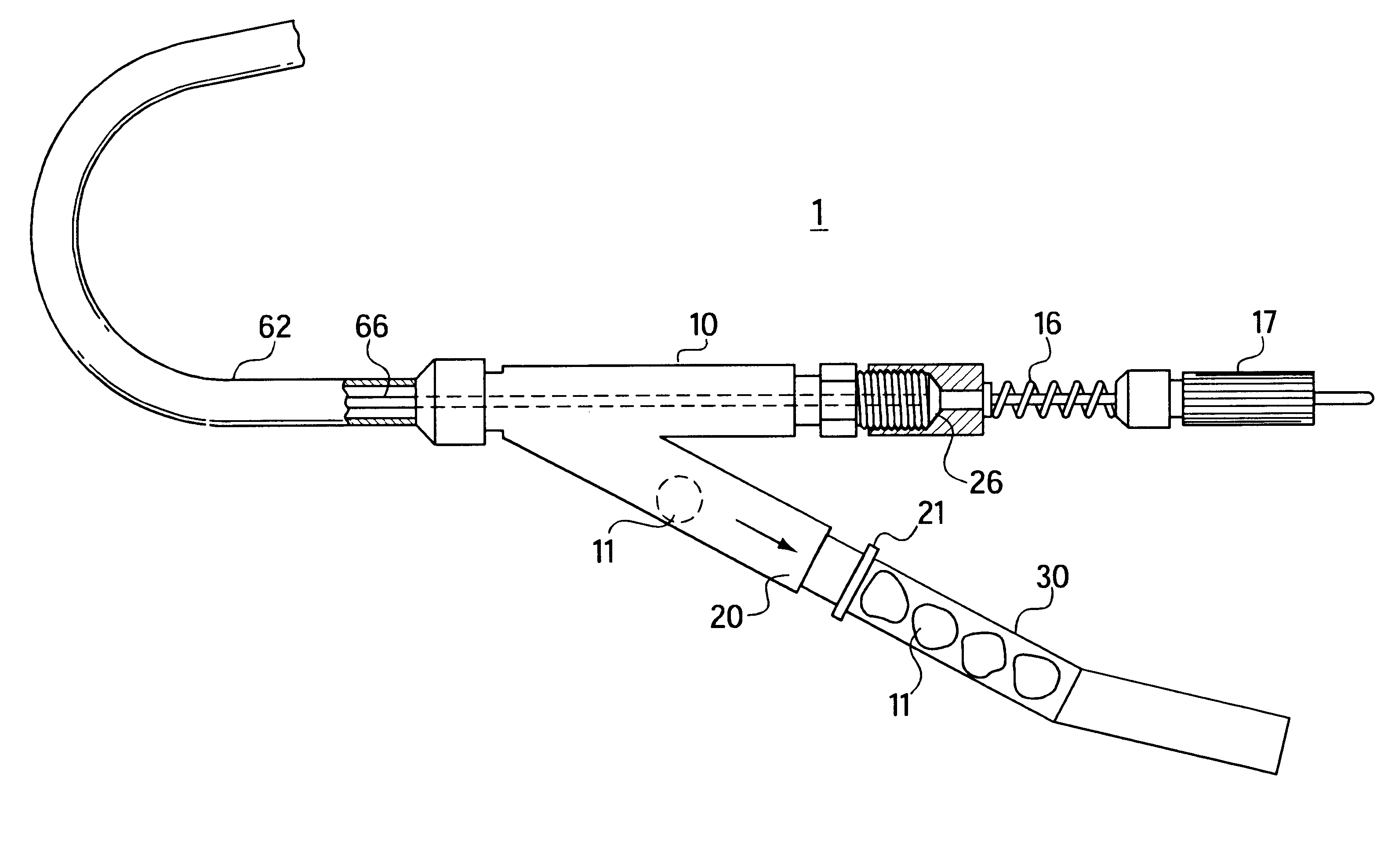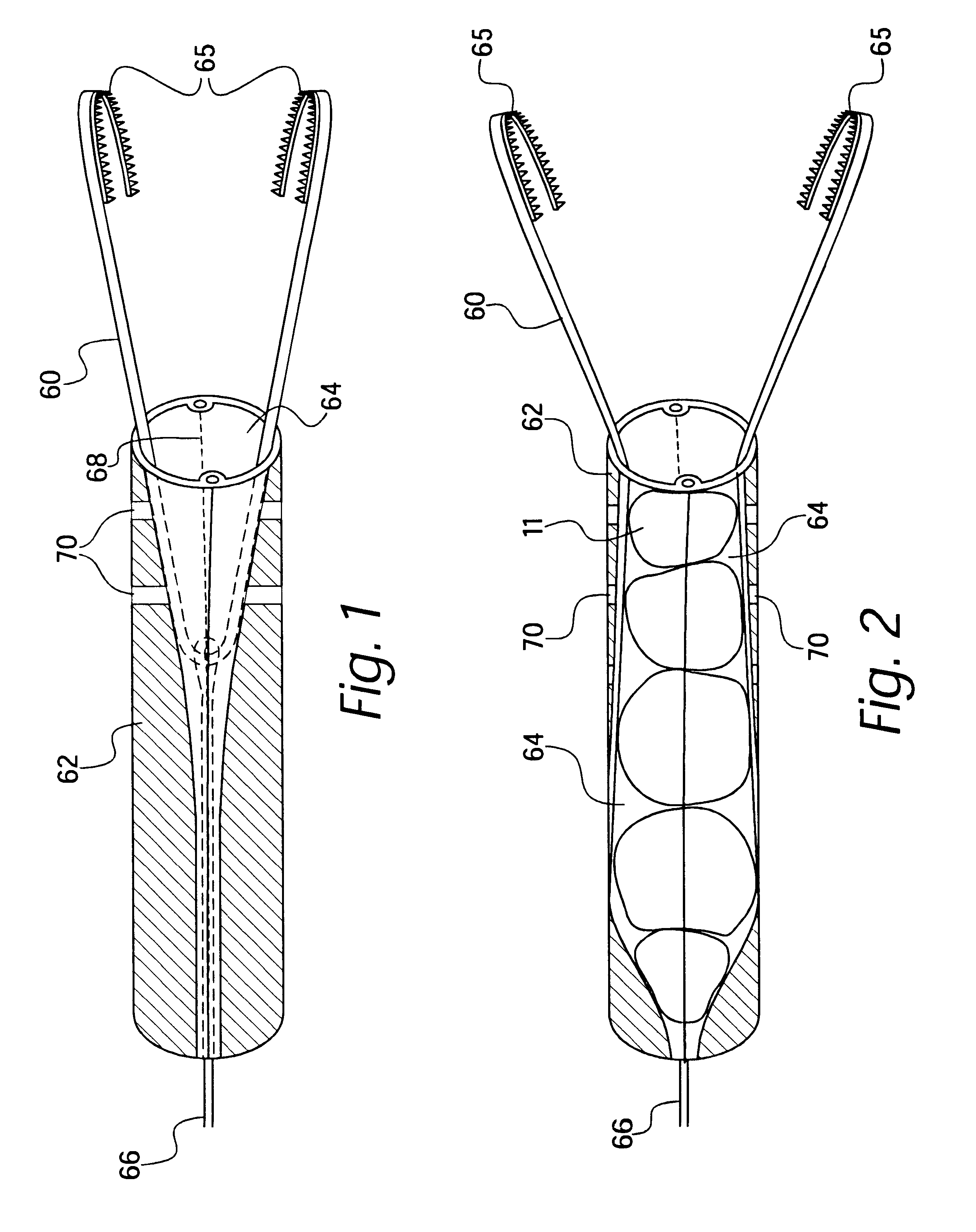Apparatus for separable external serial collection, storage and processing of biopsy specimens
a biopsy specimen and serial collection technology, applied in the field of apparatus for collection, storage and processing of biopsy specimens, can solve the problems of small specimens being lost or damaged, requiring considerable effort and expense, and only being able to retrieve samples by catheterization methods using endoscopic or fluoroscopic control,
- Summary
- Abstract
- Description
- Claims
- Application Information
AI Technical Summary
Benefits of technology
Problems solved by technology
Method used
Image
Examples
Embodiment Construction
For purposes of promoting and understanding the principles of the invention reference will now be made to the embodiment illustrated in the drawings and specific language will be used to describe the same. It will nevertheless be understood that no limitation of the scope of the invention is thereby intended, such alterations and further modifications in the illustrated device, and such further applications of the principles of the invention as illustrated therein being contemplated as would normally occur to one skilled in the art to which the invention relates.
FIGS. 1 and 2 show the device according to the invention, which retrieves specimens 11 through a spring-based biopsy cutting tool 60. Cutting tool 60 is arranged inside a catheter 62, which has two small side lumens 63 and a large central lumen 64. Central lumen 64 has a plurality of jaw guides 70 which act as a specimen holding chamber, as shown in FIG. 2. Jaw guides 70 could be made of any suitable material such as metal o...
PUM
 Login to View More
Login to View More Abstract
Description
Claims
Application Information
 Login to View More
Login to View More - R&D
- Intellectual Property
- Life Sciences
- Materials
- Tech Scout
- Unparalleled Data Quality
- Higher Quality Content
- 60% Fewer Hallucinations
Browse by: Latest US Patents, China's latest patents, Technical Efficacy Thesaurus, Application Domain, Technology Topic, Popular Technical Reports.
© 2025 PatSnap. All rights reserved.Legal|Privacy policy|Modern Slavery Act Transparency Statement|Sitemap|About US| Contact US: help@patsnap.com



